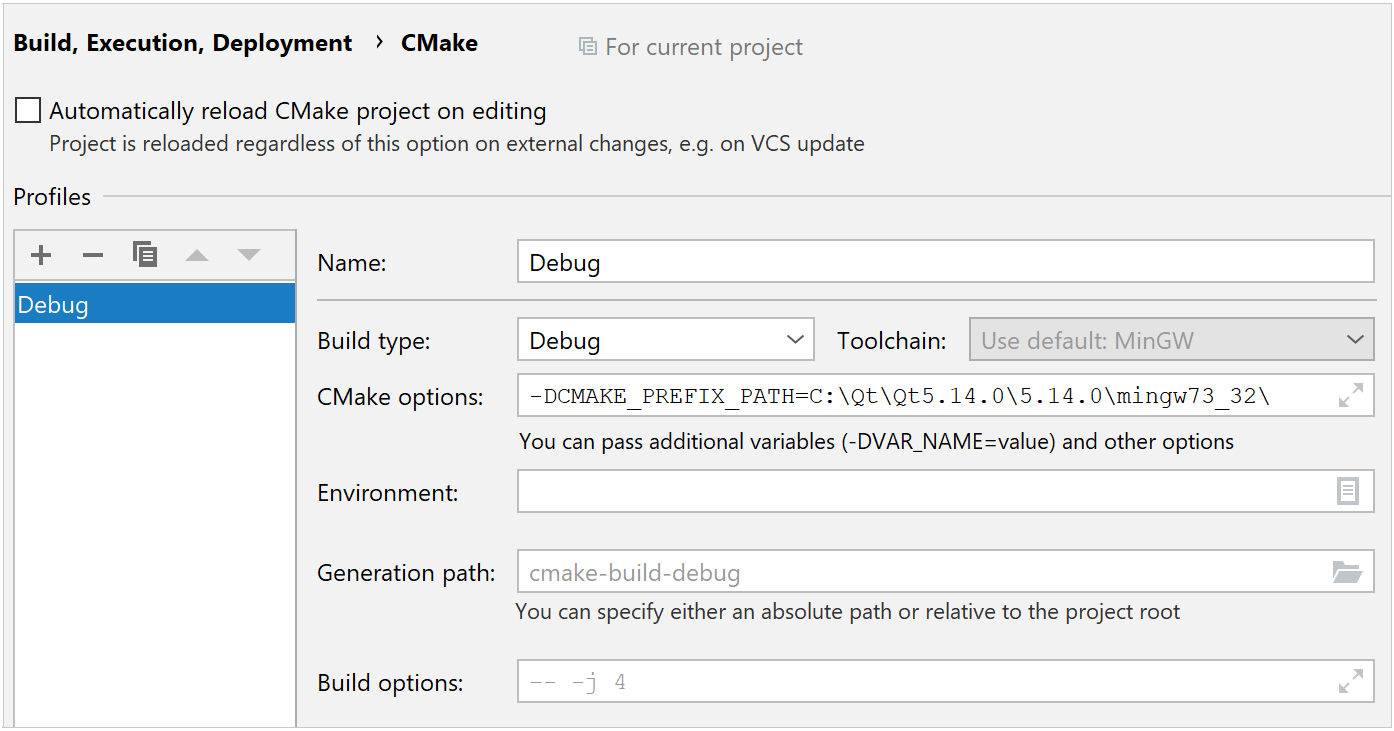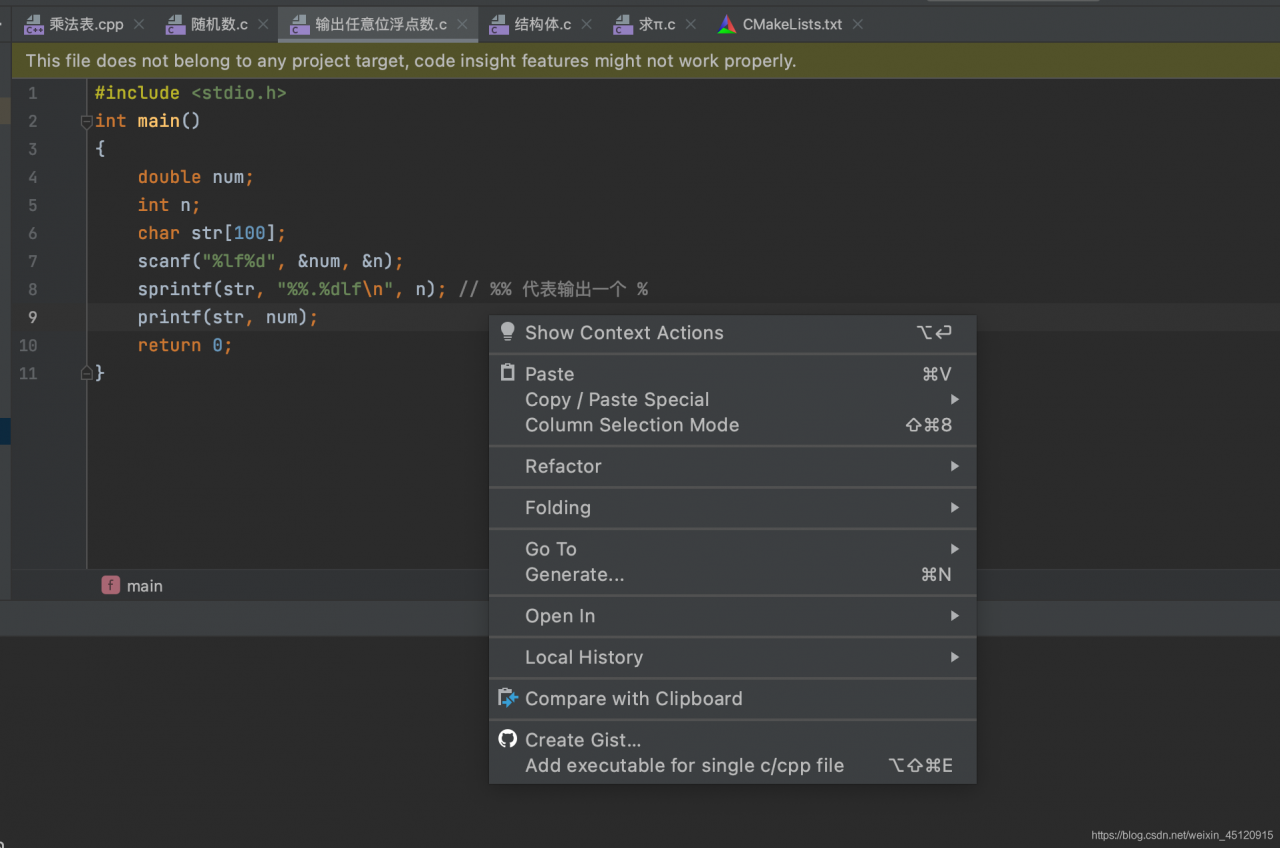

#CLION TUTORIAL WINDOWS#
Tool windows represent specific tools or tasks such as TODOs, CMake, terminal, or file structure.
#CLION TUTORIAL CODE#
Right gutter shows the code analysis results with the overall file status indicator at the top.

Left gutter - the vertical stripe to the left of the editor - shows breakpoints and clickable icons to help you navigate through the code structure (for example, jump to a definition or declaration) and run main() or tests. Navigation bar helps you switch between the files' tabs, and the Toolbar provides quick access to run/debug and VSC-related actions. You can also split the editor vertically or horizontally to view several tabs simultaneously. The editor shows each file in a separate tab. From here, you can manage project folders ( mark them as sources, libraries, or excluded items), add new files, reload the project, and call for other actions such as Recompile.Įditor is where you view, write, and edit your code. Project view shows your project files and directories. Find their description and more information on working with CMake in our tutorial. The initial CMakeLists.txt file already contains several commands. Provide the root folder location and select the language standard.ĬLion creates a new CMake project and fills in the top-level CMakeLists.txt: Note that STM32CubeMX and CUDA are also CMake-based project types. Set the type of your project: C or C++, an executable or a library. Select File | New Project from the main menu or click New Project on the Welcome screen. CLion will clone the repository to a new CMake project. Checkout from a repositoryĬlick Checkout from Version Control on the Welcome screen or select VCS | Checkout from Version Control from the main menu and choose your version control system.Įnter the credentials to access the storage and provide the path to the sources. To open a Gradle project, go to File | Open, point CLion to the folder containing adle or to the adle file itself (then select Open as Project). To open a Makefile project, go to File | Open, point CLion to the folder containing the top-level Makefile or to the Makefile itself (then select Open as Project). To open a compilation database project, go to File | Open, point CLion to the folder containing compile_commands.json or to the compile_commands.json file itself (then select Open as Project). Select File | Open and locate the CMakeCache.txt file then choose Open as Project. Select File | Open and point CLion to the top-level CMakeLists.txt file, then choose Open as Project. This directory should contain a CMakeLists.txt file. Select File | Open and locate the project directory. Open/create a project Open a local projectįor CMake projects, use one of the following options:
#CLION TUTORIAL INSTALL#
You can install other plugins to get more languages supported in CLion (such as Rust, Swift, or Markdown). See CLion features in different languages for more details. Support for these languages is implemented via the bundled plugins, which are enabled by default. Yes, CLion fully supports Python, Objective-C/C++, HTML (including HTML5), CSS, JavaScript, and XML. Are languages other that C++ supported as well? Otherwise, in case of Debian/Ubuntu, install the build_essentials package and, if required, the llvm package to get Clang. On Linux, compilers and make might also be pre-installed. Do I need to install anything in advance? Creating new projects of these types in CLion is not supported currently. CMake itself is bundled in CLion, so you don't need to install it separately unless you decide to use a custom version.Īpart from CMake, CLion supports Makefile, compilation database, and Gradle projects. What build systems are supported? What are the project formats?ĬLion fully integrates with the CMake build system: you can create, open, build and run/debug CMake projects seamlessly. Refer to the section on debugging below and to the page on Debugger options for details. Also, there is an LLDB-based debugger for the MSVC toolchain on Windows. See Compilers for more information.ĬLion supports debugging with GDB (either bundled or custom) on all platforms and with the bundled LLDB on macOS and Linux. In CLion, you can use GCC-based compilers, Clang, Clang-cl, Visual Studio C++ compiler, as well as IAR compiler and custom-defined compiler. What compilers and debuggers can I work with?

#CLION TUTORIAL HOW TO#
See CLion keyboard shortcuts for instructions on how to choose the right keymap for your operating system, and learn the most useful shortcuts. See Install CLion for OS-specific instructions. Yes, you can install and run CLion on Windows, macOS, and Linux. Before you start Is CLion a cross-platform IDE?


 0 kommentar(er)
0 kommentar(er)
